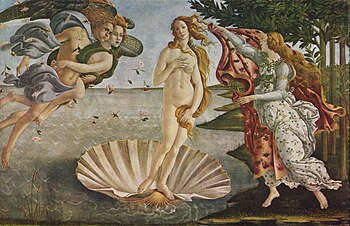

Wealthy women spent a great deal of time and money achieving the look of attractiveness most desired by the society of the time. Home recipes abounded and the concoctions that couldn’t be prepared at home, usually due to exotic ingredients, were purchased.
Cosmetics were often made of toxic and harmful ingredients such as mercury, sulphuric acid, and verdigris, the green rust that forms on copper. Components were often costly and scarce as well.
White paint covered the face, neck, and upper breasts. Teeth were artificially whitened. Vermillion blushed the cheeks and lips. Kohl enhanced the eyes, making them large and luminous. Belladonna or nightshade was ingested to dilate the pupils, giving the eyes a luminous, sexually alluring appearance. Perfume came in the form of a pomander or “scent apple,” a solid waxy perfume carried in a small decorative holder. Hair was often dyed, with blonde being the favored hue. Check out the top link below to see the long and laborious steps involved in creating a lotion to dye the hair blonde. The process involved wood shavings, liquorice, lime peel, yellow poppy seeds, saffron, lye, and other ingredients.
Cheers & Happy Reading!
Flossie Benton Rogers, Conjuring the Magic with Paranormal Fantasy Romance
Ack! That is way too much work for me! Natural blondes had it far easier. Interesting tidbit about the belladonna and nightshade (not to mention all those toxic mixtures they used). Those poor women! They must have spent half the day preparing themselves to be seen.
Must be why people didn’t “come a callin” early in the morning! The women weren’t ready until noon! What’s scary too, Mae, is that we often don’t have a clue the nature of our current lists of ingredients. I mean, we can see them but do we research what they are? Yikes.
Thanks for this, happy memories of my research into the 18th century. Yes, those wenches suffered a great deal of discomfort, sometimes as bad as direct pain and injury. Every time I whinge about something being too tight I thank heaven I am not laced into a boned corset forcing me to stand up straight.
Hahaha, Daisy! What about the new stylish waist cinchers? Thank heaven we don’t have to greet the world in the boned ones, or in the new ones unless we just want to! I enjoy your research findings.
Oh my goodness, I am so glad we no longer adhere to those fashions! I have never dyed my hair, and I don’t intend to in the future ; )
Thanks for stopping by, Catherine! I’m glad we are free of those horrendous oddities as well.